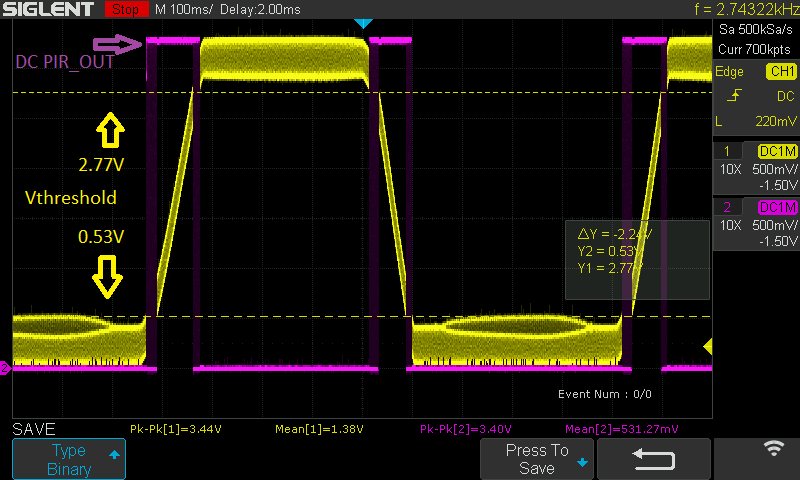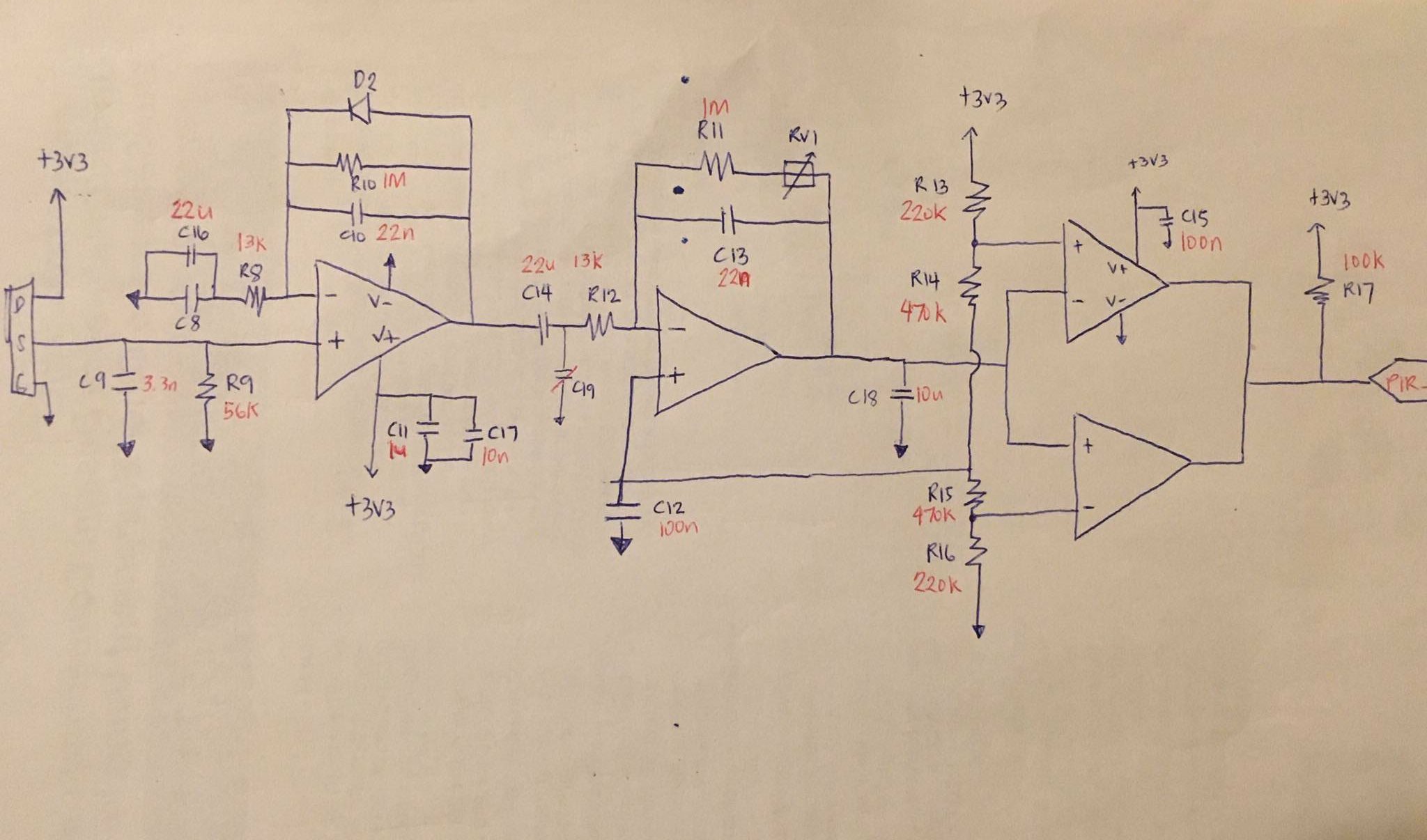Other Parts Discussed in Thread: , TINA-TI
Hi TI experts,
I'm working on PIR sensor project and I'm trying to figure out where to lower the noise on the 2nd stage output of op-amp. Below is the waveform of my circuit design, the yellow is the 2nd stage output of op amp and purple for output after window comparator (DC_PIR_OUTPUT). How to filter the noise?
Here is my schematic.
Additional detail: I'm using boost converter +3V3 TPS613221a for the Vin of this schematic.
I have read the PIR TI reference designs and tried couple of workarounds but it didn't help. Please kindly help.
Thank you.




